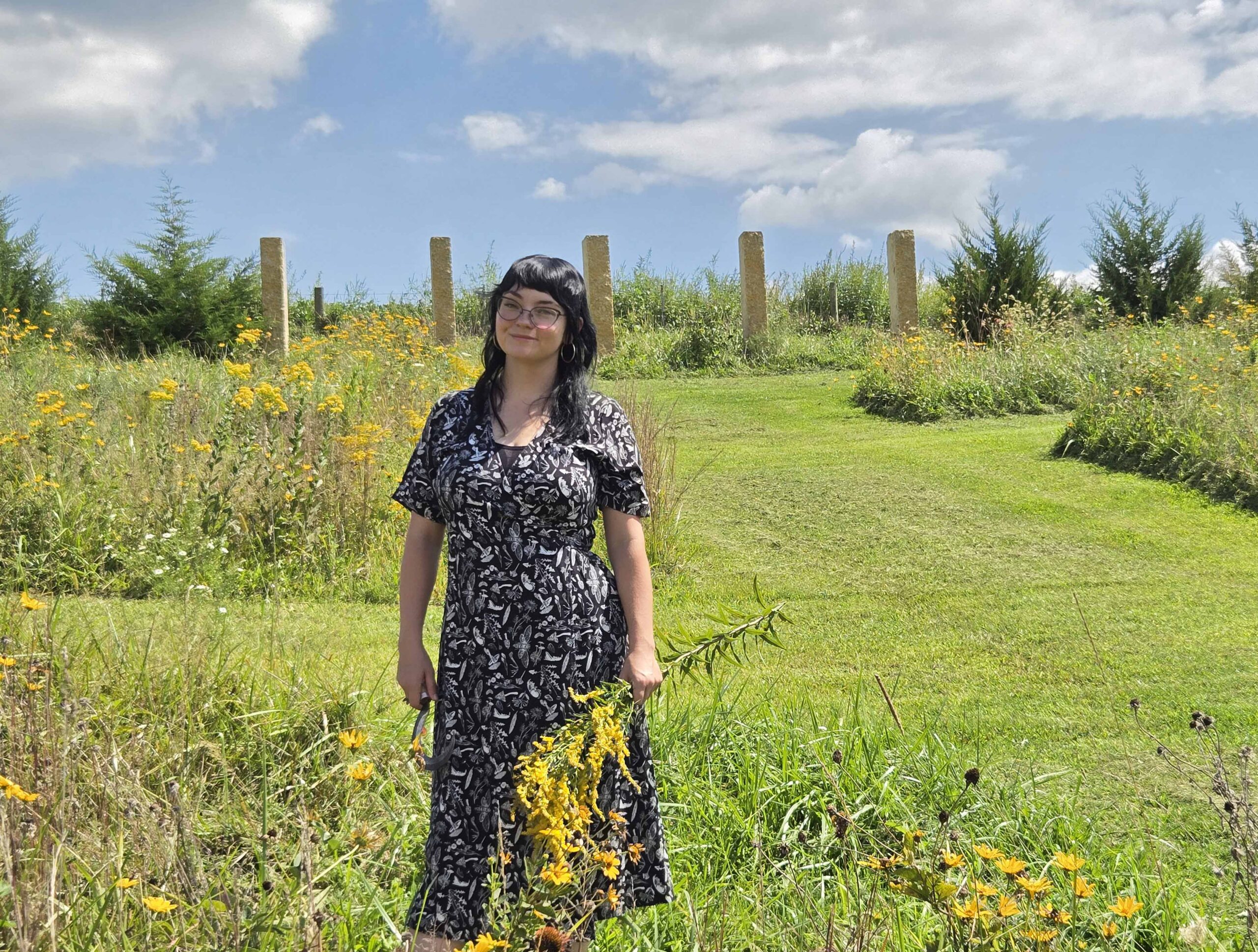SILVER CITY, NM—Western New Mexico University alum Andra Olney-Larson (BBA ’16) has worn a lot of hats in her life: she worked for the Silver City Daily Press for several years, and she has been involved in environmental conservation in both New Mexico and the Midwest. What she did not imagine, though, is that her degree in Marketing from WNMU would open the door to becoming the director of Casper Creek Natural Cemetery in Illinois.
“In 2020, I was looking for a new position. The one that I was in just wasn’t completely resonating with me,” said Olney-Larson, explaining how she found her new line of work. “We were all getting pretty introspective in 2020, and I had set up a Google alert looking for jobs that were in conservation but that involved marketing. One of the options that came up was this conservation cemetery that had not yet opened.”
After she accepted the position, the team that hired her let her know that it was her marketing degree that set her apart from other candidates. “This is a job that has a lot of parts behind it, and in the conservation field, a lot of people have strong science backgrounds, but may not have what it takes for a start-up business,” said Olney-Larson. “For us, in addition to it being this unique green burial movement—which is really something that is growing all over the country—it was a start-up, it was this nascent idea, so it really needed someone with a business background to help build that.”
“I was able to help build the business from the very beginning,” she added, “from getting all the business licenses to where we are now, coming up on five years of operation. … The Green Burial Council is the board whose standards we uphold, and being able to have a business background and a business degree is one of the things that allowed us to go through the pretty strenuous process of getting that certification.”
Casper Creek is part of a growing national trend toward natural burial. But her organization, with its focus on conserving and restoring the environment, goes beyond what many other natural cemeteries do. “A natural cemetery is one that does not use embalming or [grave] vaults, and all of the burial materials are biodegradable,” explained Olney-Larson. “A certified conservation cemetery,” she continued, “is a natural cemetery that has also been recognized by the Green Burial Council for work to preserve and restore native habitat and species.”
“In Illinois, where our cemetery is located,” she added, “that means short grass prairie, including restoring habitat for species such as the Rusty Patched Bumble Bee, which is listed as federally endangered.” There are only about a dozen certified conservation cemeteries in the country, according to Olney-Larson.
In addition to directing the cemetery, Olney-Larson is also certified as a death doula and is studying thanabotany through the School of American Thanatology. “There are different kinds of death doulas,” she explained, “but in my practice, I work with people approaching the end of life and their families to understand the kind of death they want, whether that is at home … or in a hospital. As they approach one of life’s great unknowns, I try to ensure that their wishes are carried out.”
Olney-Larson’s interest in studying thanabotany reflects the intersection between her work in conservation and her position as director of Casper Creek. “Thanabotany is the study of the role plants play in death and bereavement,” she explained. “That might mean understanding why someone chooses to place roses on a loved one’s grave, or it might mean studying the plants used by ancient Egyptians in the mummification process.”
In Olney-Larson’s view, becoming certified as a death doula and studying thanabotany take her further down a career path that has become a life-calling. “It is an honor to work with clients and their families in their end-of-life planning,” she said. “To do that work in a way that has minimal impact on the environment—that is peaceful and in harmony with nature—that is a gift.”




